0 引言
近年来,青藏高原热力状况同样是科学家们关注的焦点,许多研究学者认为青藏高原的热力状况是影响东亚气候的关键因素。在夏季,青藏高原热力变化会影响西太平洋副热带高压的强度和高纬度地区环流,从而影响我国华北以及长江中下游地区的降水、温度异常。在冬季,青藏高原的热力异常会影响南北热力梯度,从而改变冬季西风急流的强弱,进而影响东亚冬季风的强度。不仅如此,青藏高原冬季热力状况除了影响同期的环流场,还能通过陆面因子的记忆作用来影响到随后季节的环流。当青藏高原的积雪融化时,雪水渗入土壤,土壤从高原表面吸收热量从而储存了青藏高原冬季地表气温信号[9-23]。Gao等[24]指出,高原积雪的提前融化在夏季局地地表加热以及亚洲夏季风系统变化中起着重要作用。故而在某种程度上,研究青藏高原冬季热力变化在气候预测中的价值要比夏季更高。
1 资料与方法
文中所用的滤波方法为Lanczos滤波法。由于滤波之后序列的自由度将发生改变,为了保证滤波后数据做检验时的准确性,本文利用有效自由度做了订正,方法为
式中:
为了诊断大气环流异常对巴伦支-喀拉海异常海温年代际的响应,从而量化波动能量的传播,利用了Takaya等[30]定义的二维波活动通量。
式中:
2 结果
2.1 青藏高原冬季地表气温特征
图1
图1
中国1961—2017年冬季地表气温的年平均空间分布(a)及青藏高原区域平均后去趋势的标准化时间序列(b)
Fig. 1
Annual average spatial distribution of wintertime air surface temperature in China from 1961 to 2017 (a) and the detrended, standardized and regional averaged time series of air surface temperature of Qinghai-Tibet Plateau (b)
为了研究青藏高原冬季地表气温特征,将青藏高原区域地表气温去趋势后做区域平均,从图1(b)中观察到该序列存在年代际变化。进一步,运用小波分析来判断高原地表气温的年代际周期,如图2所示,小波分析结果显示周期16年处通过了90%的信度检验,其结果表明青藏高原的地表气温周期在16年处最为明显。因此,对青藏高原地表气温进行15年的低通滤波处理,保留其大于15年的年代际低频信号,滤去小于15年的高频信号,并将这个序列定义为高原地表气温指数(TPI)。为了找到影响年代际高原地表气温变化的成因,如图3所示,将TPI与同样滤去15年以上高频信号的海表面温度做相关,其结果表明,显著相关区域分布在巴伦支海以及喀拉海海域(50°~80° N,15°~60° E),该地区关于海冰的研究众多,并且许多学者指出该地区海冰对调制东亚冬季风强弱有着重要的影响[33-34]。
图2
图2
青藏高原1961—2017年冬季地表气温时间序列的小波分析(打点区域表示通过90%信度检验)
Fig. 2
Wavelet analysis of wintertime air surface temperature time series of Qinghai-Tibet Plateau from 1961 to 2017 (The dotted area indicates passing 90% reliability test)
图3
图3
1961—2017年冬季青藏高原地表气温15年低通滤波序列(a)及15年低通滤波后的海表面温度与15年低通滤波后的中国区域地表气温时间序列的相关场空间分布(b)(阴影区域表示通过了订正自由度后的95%的Student’s t检验)
Fig. 3
The 15-years low-pass filter sequence of air surface temperature of Qinghai-Tibet Plateau in winter from 1961 to 2017 (a) and spatial distribution of the correlation field between sea surface temperature after 15-years low-pass filtering and time series of regional air surface temperature in China after 15-years low-pass filtering (b) (The shaded area indicates passing 95% Student’s t-test after the revised degrees of freedom)
图4
图4
1961—2017年冬季巴伦支-喀拉海海表面温度15年低通滤波序列(a)及1968—2010年冬季15年低通滤波后的中国地表气温与巴伦支-喀拉海海表面温度15年低通滤波时间序列的相关场空间分布(b)(阴影区域表示通过了订正自由度后的95%的Student’s t检验)
Fig. 4
The 15-years low-pass filter sequence of sea surface temperature of Barents-Kara Sea in winter from 1961 to 2017 (a) and spatial distribution of the correlation field between air surface temperature in China after 15-years low-pass filtering and time series of sea surface temperature of Barents-Kara Sea after 15-years low-pass filtering (b) (The shaded area indicates passing 95% Student’s t-test after the revised degrees of freedom)
2.2 巴伦支-喀拉海海温影响青藏高原地表气温年代际变化的机制分析
为了了解巴伦支-喀拉海年代际海温变化对青藏高原的影响,进一步观察对流层低层中层大气环流场相应的变化。许多前人研究发现,大尺度的热带外海温异常,能够显著影响到年代际的大气环流,调节局地海平面气压[35-39]。图5(a)为滤波后的海平面气压与BKI的相关场,其结果反映出一个北半球中高纬度一致的正的气压异常的模态,这说明巴伦支-喀拉海的海温正异常能够引起北半球气压的异常升高。图5(b)则为滤波后500 hPa位势高度场与BKI的相关场,其中巴伦支海上空的位势高度为正异常,而在高原南北侧出现偶极子型的位势高度异常分布。图5(c)同图5(b),但为300 hPa位势高度场,能够观察到,巴伦支-喀拉海海温正异常能够引起该地区气压从低层到高层一致的正异常。并且反映在青藏高原处,高原从近地面层(约为500 hPa)至高层也同样被正的位势高度异常所占据。
图5
图5
SSTI与15年低通滤波后的海平面气压(单位:hPa)(a)、500 hPa位势高度场(单位:gpm)(b)及300 hPa位势高度场(单位:gpm)(c)的相关场空间分布(阴影区域表示通过了订正自由度后的95%的Student’s t检验)
Fig. 5
Spatial distribution of the correlation fields between SSTI and sea level pressure (unit: hPa) (a), 500 hPa potential height field (unit: gpm) (b) and 300 hPa potential height field (unit: gpm) (c) after 15-years low-pass filtering (The shaded area indicates passing 95% Student’s t-test after the revised degrees of freedom)
由于巴伦支-喀拉海年代际海温的异常而引起的位势高度的异常则进一步激发了高层大气的波活动通量的异常,图6为低通滤波后的波活动通量以及流函数与BKI的相关分析场,能够观察到流函数的异常中心分别位于巴伦支海,西伯利亚,以及青藏高原三个区域。通过观察波活动通量流向,能够看出一个稳定的Rossby波波列从巴伦支海激发出来,其中心恰好位于海温异常区,该波活动通量向东向南传播传输至西伯利亚区域。
图6
图6
SSTI与15年低通滤波后青藏高原范围内纬向平均的(72.5°~105° E)流函数(单位:m2·s-1,填色)以及波活动通量(单位:m2·s-2,矢量)(a)、200 hPa纬向风(单位:m·s-1)(b)及100~1 000 hPa位势高度场(单位:gpm,填色)和风场(单位:m·s-1,矢量)(c)的相关场空间分布[打点和阴影区域以及矢量表示通过了订正自由度后的95%的Student’s t检验;(c)下部的黑色实线代表87.5° E处的地形]
Fig. 6
Spatial distribution of correlation field of SSTI and zonal mean over Tibetan Plateau (72.5°~105° E) stream function (unit: m2·s-1, shading) and wave activity flux (unit: m2·s-2, vector) (a), 200 hPa zonal wind (unit: m·s-1) (b), 100~1 000 hPa geopotential height field (unit: gpm, shading) and wind filed (unit: m·s-1, vector) (c) after 15-years low-pass filtering [The dotted and shaded areas and vectors indicate passing 95% Student’s t-test after the revised degrees of freedom; The black solid lines in (c) lower part represent the terrain at 87.5° E]
由于Rossby波的扰动作用,波传输路径上的地区的位势高度场也会随即发生相应的扰动。如图5(c)所示,西伯利亚地区的位势高度场出现负异常,该负异常导致了副极地西风急流以及副热带西风急流异常。图6(b)低通滤波后的200 hPa纬向风与BKI的相关场,由于西伯利亚位势高度的负异常,使得60° N处出现纬向东风异常,而在30° N青藏高原处则出现西风急流加强。而高原处的西风异常会产生反气旋式的风切变,从而在300h Pa青藏高原南处出现正位势高度异常[图5(c)]。为了更加直观地观察由位势高度异常产生出的青藏高原上空的大气环流变化,将高原范围内纬向平均(72.5°~105° E)后的经向风速、垂直风速和位势高度场与BKI做相关[图6(c)],从图中可以看出经向上,70°~80° N、40°~50° N和20°~32.5° N位势高度场呈现三级子分部特征,且表现出从近地面到高空整层大气斜压结构。特别地在青藏高原区域,尤其是高原南部表现出从低空到高空一致的位势高度正异常,伴随着由此产生的下沉运动的异常。而由于这样的下沉运动的加强,高原上空的大气通过非绝热加热过程而不断加热,从而使得地表气温上升。
2.3 巴伦支-喀拉海海温年代际位相转变对青藏高原大气环流年代际变化的影响
如图4所示,图中的蓝线表示15年低通滤波后的巴伦支海海温序列,可以观察到在1968—2010年巴伦支海海温呈现出正—负—正的位相,在1968—1977年以及2002—2010年,巴伦支海海温处于正位相,而在1978—2001年处于负位相。将两个正位相定义为第一时段,而负位相定义为第二时段,为了进一步验证巴伦支海、喀拉海年代际海温变化对大气环流以及青藏高原的影响,对两时段的大气环流差异做合成分析。
如图7所示为第一时段减去第二时段的海平面气压,500 hPa和300 hPa位势高度的合成分析,可以观察到巴伦支-喀拉海海域年代际海温能够影响高纬度整层大气环流,并且能够显著调制中高层西伯利亚地区以及高原南部的位势高度场。而图8(a)中的300 hPa的波活动通量以及流函数的合成分析则进一步表明了巴伦支-喀拉海海温状况的改变对平均波流活动的调节。Rossby波由巴伦支-喀拉海激发,并且传向西伯利亚地区,从而引起西伯利亚高层异常的辐合运动,从而解释了图7中该地区的位势高度场的异常。进一步由于西伯利亚高层的辐合导致的气旋性环流,其南北两侧的副极地西风急流和副热带西风急流同样发生强度变化[图8(b)],而由于副热带西风急流的增强,从而使得高原上空发生异常辐散。从经向上观察两个时间段高原上的垂直气压和风场的结构变化,将高原纬向平均(72.5°~105° E)后的位势高度场以及风场做相同的合成分析。如图8(c)所示,高原北侧位势高度异常显著,高原中南部受到正位势高度异常控制,受位势高度场的影响,高原上空为一致的下沉运动。进一步,由于明显的下沉运动的存在,高原地表气温通过非绝热加热作用加热地表气温,图9为两时段合成分析的地表气温空间分布,能够看出青藏高原除北部少部分区域外,都呈现出显著的正异常。
图7
图7
巴伦支-喀拉海海温正位相与负位相的合成差值(1968—1977年以及2002—2010年减1978—2001年):海平面气压(单位:hPa)(a)、500 hPa位势高度(单位:gpm)(b)及300 hPa位势高度(单位:gpm)(c)(阴影区域表示通过了订正自由度后的95%的Student’s t检验)
Fig. 7
The compose differences between positive and negative phases of sea surface temperature (SST) of Barents-Kara Sea (1968—1977 and 2002—2010 minus 1978—2001): sea level pressure (unit: hPa) (a), 500 hPa potential height (unit: gpm) (b) and 300 hPa potential height (unit: gpm) (c) (The shaded area indicates passing 95% Student’s t-test after the revised degrees of freedom)
图8
图8
巴伦支-喀拉海海温正位相与负位相在青藏高原范围内纬向平均(72.5°~105° E)的合成差值(1968—1977年以及2002—2010年减1978—2001年):流函数(单位:106 m2·s-1,填色)以及波活动通量(单位:m2·s-2,矢量)(a)、200 hPa纬向风(单位:m·s-1)(b)及100~1 000 hPa位势高度场(单位:gpm,填色)和风场(单位:m·s-1,矢量)(c)[打点和阴影区域以及矢量表示通过了订正自由度后的95%的Student’s t检验;(c)下部的黑色实线代表87.5° E处的地形]
Fig. 8
The composite differences of zonal mean over Tibetan Plateau (72.5°~105° E) between positive and negative phases of SST of Barents-Kara Sea (1968—1977 and 2002—2010 minus 1978—2001): stream function (unit: 106 m2·s-1, shading) and wave activity flux (unit: m2·s-2, vector) (a), 200 hPa zonal wind (unit: m·s-1) (b) and 100~1 000 hPa potential height field (unit: gpm, shading) and wind filed (unit: m·s-1, vector) (c) [The dotted and shaded areas and vectors indicate passing 95% Student’s t-test after the revised degrees of freedom; The black solid lines in (c) lower part represent the terrain at 87.5° E]
图9
图9
巴伦支-喀拉海海温正位相与负位相中国地表气温(单位:℃)的合成差值(1968—1977年以及2002—2010年减1978—2001年)(阴影区域表示通过了订正自由度后的95%的Student’s t检验)
Fig. 9
The composite differences between positive and negative phases of SST of Barents-Kara Sea (1968—1977 and 2002—2010 minus 1978—2001) for air surface temperature (unit: ℃) in China (The shaded area indicates passing 95% Student’s t-test after the revised degrees of freedom)
3 结论
本文应用中国气象局地表气温观测资料、JRA-55再分析数据以及国际海洋大气综合数据集中的海表温度数据,运用低通滤波以及相关、合成分析等方法,揭示巴伦支-喀拉海海温年代际异常变化及其与青藏高原地表气温年代际变化的可能联系和机制。研究结果表明,青藏高原冬季地表气温呈现16年周期的年代际变化信号,进一步的相关分析发现青藏高原地表气温与巴伦支-喀拉海海温异常存在明显的年代际联系。
图10为巴伦支-喀拉海影响青藏高原地表气温年代际变化的可能机制,冬季巴伦支-喀拉海海温异常偏暖引起局地高层大气异常的辐合辐散,从而造成位势高度的异常,而位势高度场的振荡引起了Rossby波的传播。由巴伦支-喀拉海产生的Rossby波向东传播,影响西伯利亚地区,引起该地区位势高度的异常同时伴随南北两侧副极地和副热带西风急流增强和减弱,而副热带西风急流的加强或减弱而产生的相应的切变则在青藏高原高层产生异常的辐合或辐散,随之而来的异常下沉或上升运动将通过非绝热加热过程调制高原地表气温。
图10
图10
巴伦支-喀拉海海温年代际异常调控青藏高原地表气温年代际变化的机制示意图
Fig. 10
Schematic diagram of the mechanism of interdecadal variation of air surface temperature of Qinghai-Tibet Plateau regulated by interdecadal SST anomalies of Barents-Kara Sea
参考文献
Arctic amplification produced by sea ice retreat and its global climate effects
[J].
北极海冰减退引起的北极放大机理与全球气候效应
[J].
Causes of Arctic amplification: a review
[J].
北极放大效应原因的研究进展
[J].
External forcing of the early 20th century Arctic warming
[J].
A negative phase shift of the winter AO/NAO due to the recent Arctic sea-ice reduction in late autumn
[J].
Influence of low Arctic sea-ice minima on anomalously cold Eurasian winters
[J].
The impact of variation of sea-ice extent in the Kara Sea and the Barents Seas in winter on the winter monsoon over East Asia
[J].
冬季北极喀拉海、巴伦支海海冰面积变化对东亚冬季风的影响
[J].
Increased quasi stationarity and persistence of winter Ural blocking and Eurasian extreme cold events in response to Arctic warming: Part I: insights from observational analyses
[J].
Seasonal cumulative effect of Ural blocking episodes on the frequent cold events in China during the early winter of 2020/21
[J].
An amplified signal of climatic change in soil temperatures during the last century at Irkutsk, Russia
[J].
Long-term tracking of climate change by underground temperatures
[J].
An examination of short-and long-term air-ground temperature coupling
[J].
How have soil temperatures been affected by the surface temperature and precipitation in the Eurasian continent?
[J].
Relationship between air and soil temperature trends and periodicities in the permafrost regions of Russia
[J].
Impact of springtime Himalayan-Tibetan Plateau snowpack on the onset of the Indian summer monsoon in coupled seasonal forecasts
[J].
Impacts of snow initialization on subseasonal forecasts of surface air temperature for the cold season
[J].
Snow data assimilation-constrained land initialization improves seasonal temperature prediction
[J].
Influence of Tibetan Plateau snow cover on East Asian atmospheric circulation at medium-range time scales
[J].
Impacts of Tibetan Plateau snow cover on the interannual variability of the East Asian summer monsoon
[J].
Spring land surface and subsurface temperature anomalies and subsequent downstream late spring-summer droughts/floods in North America and East Asia
[J].
Impacts of spatiotemporal anomalies of Tibetan Plateau snow cover on summer precipitation in eastern China
[J].
The summer snow cover anomaly over the Tibetan Plateau and its association with simultaneous precipitation over the mei-yu-baiu region
[J].
Influence of Tibetan Plateau autumn snow cover on interannual variations in spring precipitation over southern China
[J].
Investigating soil thermodynamic parameters of the active layer on the northern Qinghai-Tibetan Plateau
[J].
Impact of the anomalous thawing in the Tibetan Plateau on summer precipitation in China and its mechanism
[J].
Relationship between multi-scale variations of snow cover on the Tibetan Plateau in early-spring and the North Atlantic sea surface temperature
[J].
青藏高原初春积雪的多尺度变化与北大西洋海温的关系
[J].
An Arctic-Tibetan connection on subseasonal to seasonal time scale
[J].
The Japanese 55-year reanalysis “JRA-55”: an interim report
[J].
The JRA-55 reanalysis: general specifications and basic characteristics
[J].
Extended reconstructed sea surface temperature, version 5 (ERSSTv5): upgrades, validations, and intercomparisons
[J].
A formulation of a phase-independent wave-activity flux for stationary and migratory quasigeostrophic eddies on a zonally varying basic flow
[J].
An analysis of the diabatic heating characteristic of atmosphere over the Tibetan Plateau in winter I: climatology
[J].
冬季青藏高原大气热状况分析I: 气候平均
[J].
REOF analysis of climatic characteristics of winter temperature and humidity on Xizang-Qinghai Plateau
[J].
青藏高原冬季平均温度、湿度气候特征的REOF分析
[J].
Progresses in the impact study of Arctic sea ice loss on wintertime weather and climate variability over East Asia and key academic disputes
[J].
北极海冰融化影响东亚冬季天气和气候的研究进展以及学术争论焦点问题
[J].
Impact of Arctic sea ice on the high pressure over the Ural Mountains during January 2008
[J].
北极海冰对2008年1月乌拉尔高压异常的影响
[J].
Mechanisms determining the atmospheric response to midlatitude SST anomalies
[J].
An observational study of the impact of the North Pacific SST on the atmosphere
[J].
Structure and dynamics of decadal anomalies in the wintertime midlatitude North Pacific ocean-atmosphere system
[J].
A multivariate estimate of the cold season atmospheric response to North Pacific SST variability
[J].
Response of atmospheric circulation to multiscale SST anomaly associated with Kuroshio Extension decadal variability warming in winter
[J].
冬季大尺度环流对黑潮延伸体不同尺度海温异常的年代际响应特征及可能机制
[J].





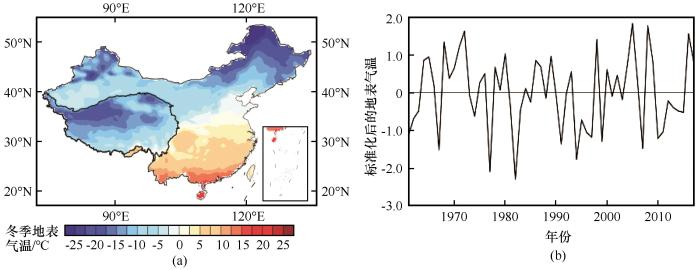
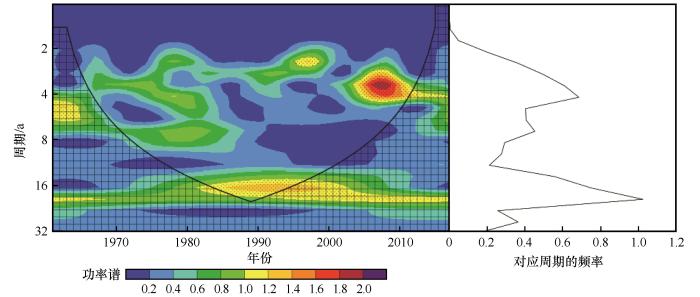

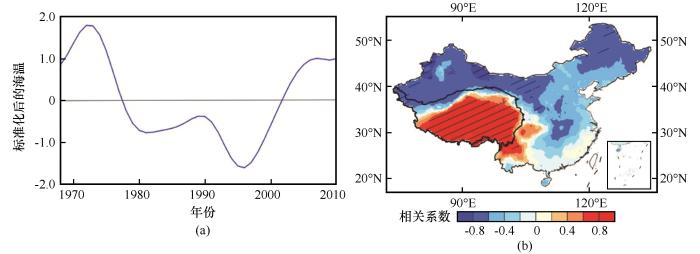
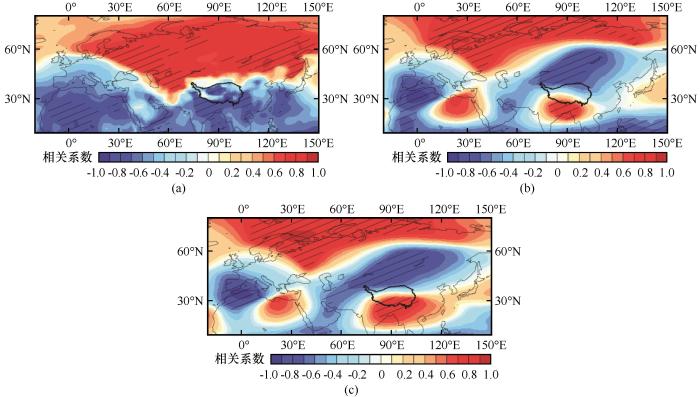
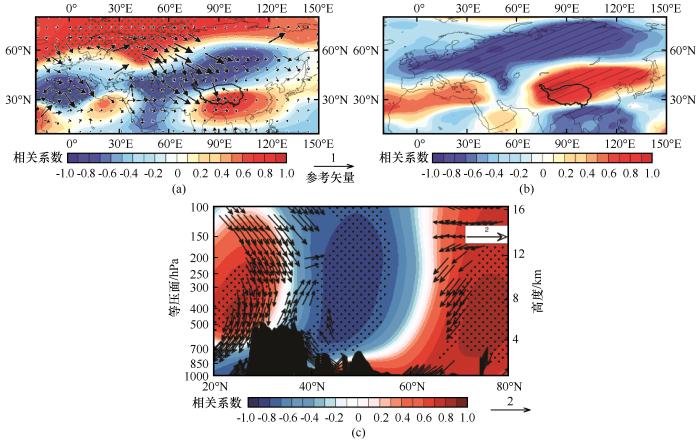
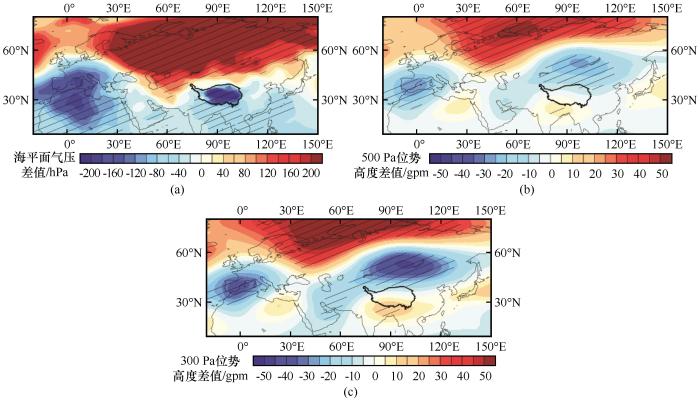
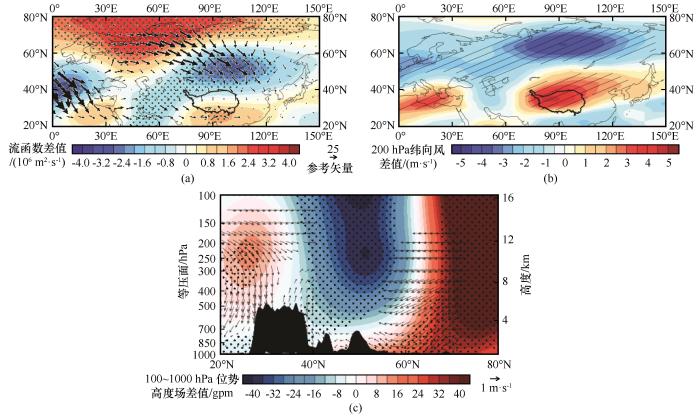
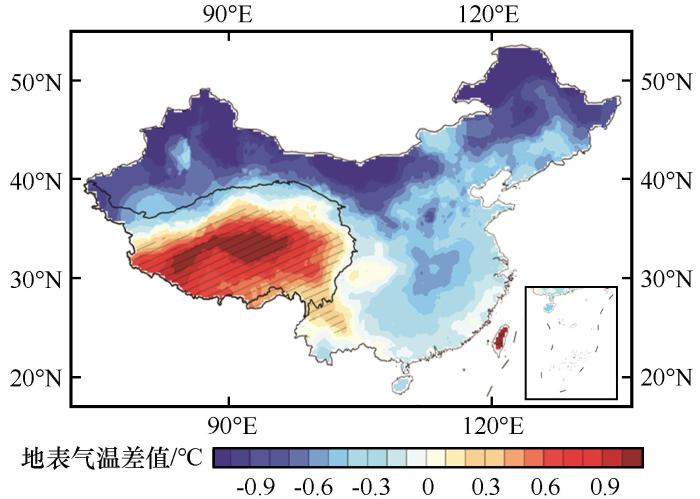


 甘公网安备 62010202000676号
甘公网安备 62010202000676号